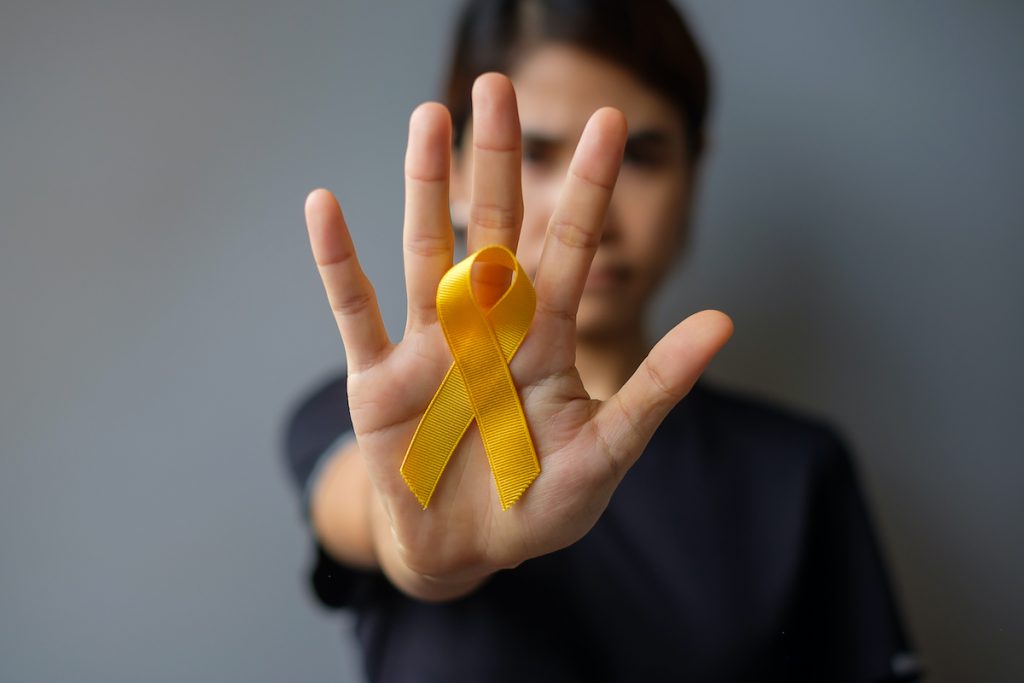
Suicide is a major public health issue and a leading cause of death among children and young people (CYP) worldwide. Recent data on suicide-related deaths from the Office for National Statistics (ONS) indicate a 22% one-year increase in suicide rates in under 25-year-olds, the largest rise among all age groups (ONS, 2019). Given the high prevalence of suicide rates among CYP, it is imperative that healthcare services, policies, and guidelines ensure suicide prevention among CYP is a key priority.
Children and young people (CYP) presentations to emergency departments (ED) for self-harm have been shown to increase internationally over the last decade (Sara et al., 2023). Unsurprisingly, the COVID-19 pandemic added additional pressures to NHS services. The disruption of ‘normal’ clinical practice presented particular difficulties for those needing emergency care during this time. Mandatory lockdowns, closure of schools and social restrictions had significant impacts on the mental health of CYP, including increases in depression, anxiety, suicidality and self-harm over the course of the pandemic (Winter & Lavis, 2022; Huang & Ougrin, 2021). CYP in particular are thought to be a generation at risk of being ‘left behind’ because of a combination of soaring ED waiting times, limited access to health services, and the pandemic’s disproportionate impact on their mental health (Iacobucci, 2022).
Despite these concerns, it is unclear how service use, self-harm and suicide among CYP have changed since the pandemic. To gain timely information, a systematic review conducted by Madigan et al. (2023) aimed to explore the current published literature to quantify pandemic-related changes in paediatric ED visits for attempted suicide, self-harm, and suicidal ideation. Given the overall lack of consensus about the impact of the COVID-19 pandemic on ED presentation rates and the overall mental health of CYP, this blog outlines the findings from this systematic review and considers the implications for practice.

Emergency departments are often the first point of contact for young people experiencing suicide-related distress.
Methods
Search strategy and selection criteria
The authors conducted a systematic review and meta-analysis utilising MEDLINE, Embase and PsycINFO to identify relevant research related to mental health, paediatrics and coronavirus. Studies were included if they reported ED visit data on attempted suicide, self-harm, or suicidal ideation and included data before and during the COVID-19 pandemic. Only paediatric samples were included (those aged <19 years).
Data extraction
Author names, year of publication, study characteristics (country, setting, duration of data collection), and sample characteristics (age, sex, race, and ethnicity) were extracted from each eligible study. Data was also extracted on the number of ED visits before and during the COVID-19 pandemic for attempted suicide, self-harm and suicidal ideation. Total visits for other mental health related reasons (i.e., depression, anxiety) and health concerns (i.e., medical or physical) were also noted. Rates of ED visits before and during the pandemic were calculated by dividing the number of ED visits by the time period for data collection. Magnitude thresholds for interpreting rate ratio decrease: 0.90 to <1.00 slight; 0.70 to <0.90 small; 0.50 to <0.70 moderate; and <0.50 large. Thresholds for increases: 1.00 to <1.11 slight; 1.11 to <1.43 small; 1.43 to <2.00 moderate, >2.00 large. Data was extracted by two independent coders to increase the validity and reliability of extracted data. There was a high level of intercoder agreement (87%) reported by authors.
Results
Study characteristics
10,360 non-duplicate records were identified through the search, and 517 full texts were reviewed, which resulted in 42 studies meeting the inclusion criteria. Across the 42 studies, 11.1 million ED visits were recorded. The mean age of participants was 11.7 years, with a higher proportion of ED attendances recorded for girls (57.6%) than boys (43.3%). Pre-pandemic comparison dates range from 2015 to 2020, and pandemic ED visits were explored from 2020 to 2021. Studies reported data from Asia (N=2), Europe (N=17), North America (N=16), Australia or New Zealand (N=6), and one study pooled data from multiple countries.
Comparison pre- and during COVID-19 pandemic emergency department (ED) visits
- The authors reported an increase in ED visits during the pandemic for attempted suicide (RR 1.22, 90% CI 1.08 to 1.37; slight-to-small magnitude) and an increase for suicidal ideation (1.08; 0.93 to 1.25’ slight-to-small magnitude).
- In relation to self-harm presentations, the authors noted evidence of a slight change; weak evidence for a reduction, and strong evidence against an increase in self-harm (0.96; 0.89 to 1.04; small-to-slight magnitude).
- A reduction in ED visits for other mental health related reasons was also reported (0.81; 0.74 to 0.89; small magnitude).
- When examining the included studies by sex, the authors reported an increase in suicidal ideation or attempt during the COVID pandemic for girls (RR 1.39; 90% CI 1.04 to 1.88; small-to-moderate magnitude) and evidence of a small increase among boys (1.06; 0.92 to 1.24; slight-to-small magnitude).
- The meta-analysis of four included studies provided inconclusive evidence related to self-harm rates in girls and boys.
- Self-harm was the only outcome with sufficient data to examine age-related differences. The meta-analysis of 11 studies indicated an increase in self-harm presentations for older children (mean age 16.3 years), and modest evidence of a decrease among younger children (mean age 9.0 years).
- Only one study included in the review provided data on the association between race, ethnicity, and socioeconomic status. The authors reported that in this study rates of suicidal ideation or attempt increased among White adolescents (1.60; 1.41 to 1.82; small-to-moderate magnitude). There was also an increase among Black (1.12; 1.00 to 1.26; slight-to-small magnitude), Hispanic or Latinx (1.25; 0.94 to 1.67; slight-to-moderate magnitude), and Asian American adolescents (1.38; 0.95 to 2.00; slight-large magnitude). Rates of suicidal ideation increased among all but the lowest socio-economic group.

Young people’s emergency department presentations for suicide-related thoughts and behaviours increased during the COVID-19 pandemic.
Conclusions
The systematic review conducted by Madigan and colleagues (2023) showed an increase in suicide-related thoughts and behaviours and resultant ED presentations among CYP over the course of the COVID-19 pandemic. Findings mirror other pandemic-related research indicating an increase in paediatric mental illness (Imran et al. 2020; Fegert et al. 2020), as well as help-seeking behaviour (Radhakrishnan, 2022) during the pandemic.

Efforts to mitigate the increase in suicide and self-harm related paediatric emergency department visits are urgently needed to inform prevention strategies.
Strengths and limitations
The authors highlight the importance of this systematic review to address current gaps in the literature related to ED presentations during COVID for CYP. The review methodology was consistent with established standards (PRISMA) for review processes of study selection, data extraction, and quality assessment, conducted independently by two authors.
That said, the findings of the review need to be considered in the presence of some limitations. Data for the study are based on electronic hospital records, which have been consistently reported to underestimate self-harm ED presentations by as much as 60% (Clements et al., 2016). Inconsistent and inaccurate coding poses issues for the use of hospital data for research purposes, with identification of mental health presentations increasingly difficult to identify if they have been coded with a non-psychiatric code (i.e., self-harm coded as ‘laceration’) (Clements et al., 2016; McCarthy et al., 2021).
Secondly, articles were also only included in the review if there were in the English language. This may fail to capture and take into account other countries differing responses to the COVID-19 pandemic. Related to this is that the majority of studies were from North America, Europe and Australia, which may impact the global generalisability of findings.

Improved coding practices for emergency department presentations would increase the accuracy and confidence of research findings.
Implications for practice
Accurate detection and documentation of suicide-related presentations are urgently needed to increase the ability to utilise administration data for research purposes and generalise findings across ED settings. There is a need for the implementation of new coding systems to standardise coding practices and ensure all staff are trained to accurately support these presentations. Ensuring timely data collection within ED can feed into improving and informing policy, as well as developments in crisis care to ensure more effective targeting of resources to areas with the highest prevalence of suicide-related behaviours (McCarthy et al., 2021). This will help bridge the gap between research and practice and improve patient experiences and resultant clinical pathways.
Increased suicidal ED presentations for CYP also have significant implications for staff. Research has consistently highlighted issues related to poor service and staff availability, clinical capacity and limited resources, increasing staff burnout, emotional exhaustion, and job dissatisfaction; with these issues already being present pre-pandemic (McCarthy et al. 2023). This can have negative implications for staff decision-making, resulting in risk aversion and defensive practice. Addressing the strain placed on staff as a result of increased CYP presentations would ensure more effective care for patients and improve the quality of care for both staff and patients.

Addressing issues related to coding practices, staff burnout, and poor service availability will improve patient experiences and resultant clinical pathways.
Statement of interests
Molly McCarthy is completing her PhD on emergency department attendance, coding practices, and staff decision-making for people presenting in suicidal crisis. However, Molly has no conflicts and was not involved in the study reviewed in the blog.
Links
Primary paper
Madigan, S., Korczak, D. J., Vaillancourt, T., Racine, N., Hopkins, W. G., Pador, P., … & Neville, R. D. (2023). Comparison of paediatric emergency department visits for attempted suicide, self-harm, and suicidal ideation before and during the COVID-19 pandemic: a systematic review and meta-analysis. The Lancet Psychiatry.
Other references
Ashworth, E., Provazza, S., McCarthy, M., & Saini, P. (2022). Children and young people presenting in a pediatric emergency department in North-West England in suicidal crisis: an exploratory case series study. Frontiers in psychiatry, 746.
Baracaia, S., McNulty, D., Baldwin, S., Mytton, J., Evison, F., Raine, R., … & Barratt, H. (2020). Mental health in hospital emergency departments: cross-sectional analysis of attendances in England 2013/2014. Emergency Medicine Journal, 37(12), 744-751.
Clements, C., Turnbull, P., Hawton, K., Geulayov, G., Waters, K., Ness, J., … & Kapur, N. (2016). Rates of self-harm presenting to general hospitals: a comparison of data from the Multicentre Study of Self-Harm in England and Hospital Episode Statistics. BMJ open, 6(2), e009749.
Fegert, J. M., Vitiello, B., Plener, P. L., & Clemens, V. (2020). Challenges and burden of the Coronavirus 2019 (COVID-19) pandemic for child and adolescent mental health: a narrative review to highlight clinical and research needs in the acute phase and the long return to normality. Child and adolescent psychiatry and mental health, 14, 1-11.
Huang, H. C. H., & Ougrin, D. (2021). Impact of the COVID-19 pandemic on child and adolescent mental health services. BJPsych Open, 7(5), e145.
Iacobucci, G. (2022). Covid-19: Pandemic has disproportionately harmed children’s mental health, report finds. BMJ 2022; 376.
Imran, N., Zeshan, M., & Pervaiz, Z. (2020). Mental health considerations for children & adolescents in COVID-19 Pandemic. Pakistan journal of medical sciences, 36(COVID19-S4), S67.
McCarthy M, Saini P, Nathan R, McIntyre J. Improve coding practices for patients in suicidal crisis. BMJ. (2021) 375:1–2. DOI:
McCarthy, M., McIntyre, J., Nathan, R., & Saini, P. (2023). Factors influencing emergency department staff decision-making for people attending in suicidal crisis: a systematic review. Archives of suicide research, 1-15. DOI:
Office for National Statistics. Suicides in the UK – Office for National Statistics. London: Office for National Statistics (2019). Retrieved from
Radhakrishnan, L. (2022). Pediatric emergency department visits associated with mental health conditions before and during the COVID-19 pandemic—United States, January 2019–January 2022. MMWR. Morbidity and mortality weekly report, 71.
Sara, G., Wu, J., Uesi, J., Jong, N., Perkes, I., Knight, K., … & Bowden, M. (2023). Growth in emergency department self-harm or suicidal ideation presentations in young people: comparing trends before and since the COVID-19 first wave in New South Wales, Australia. Australian & New Zealand Journal of Psychiatry, 57(1), 58-68. DOI:
Winter, R., & Lavis, A. (2022). The impact of COVID-19 on young people’s mental health in the UK: key insights from social media using online ethnography. International Journal of Environmental Research and Public Health, 19(1), 352. DOI:
Photo credits
- Photo by J W on Unsplash
- Photo by Flavio Gasperini on Unsplash
- Photo by National Cancer Institute on Unsplash
- Photo by Jesús Rodríguez on Unsplash
